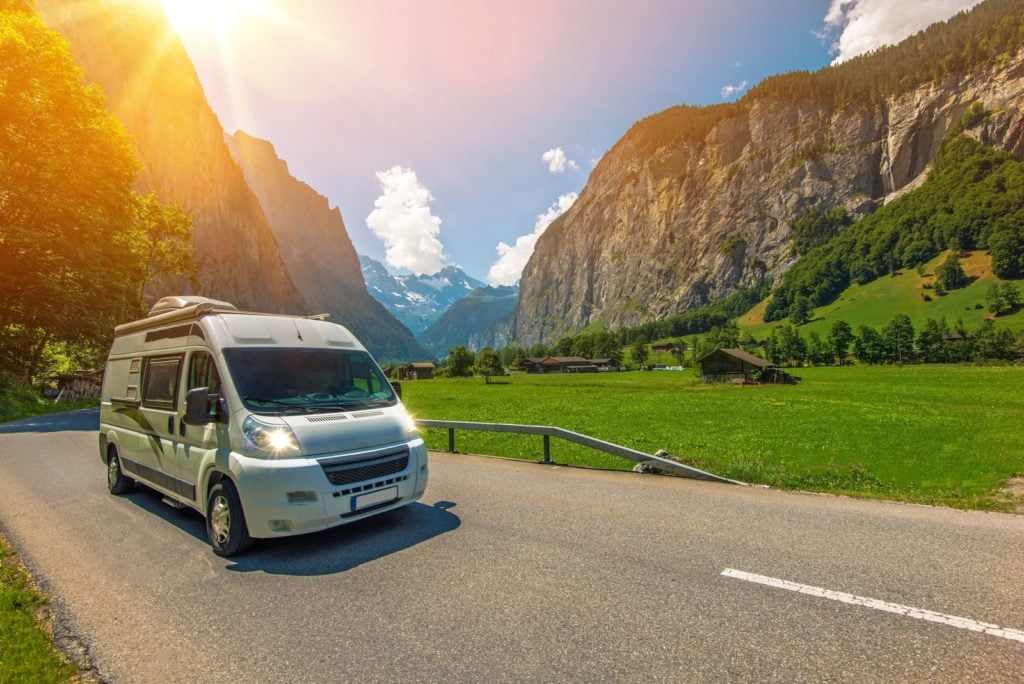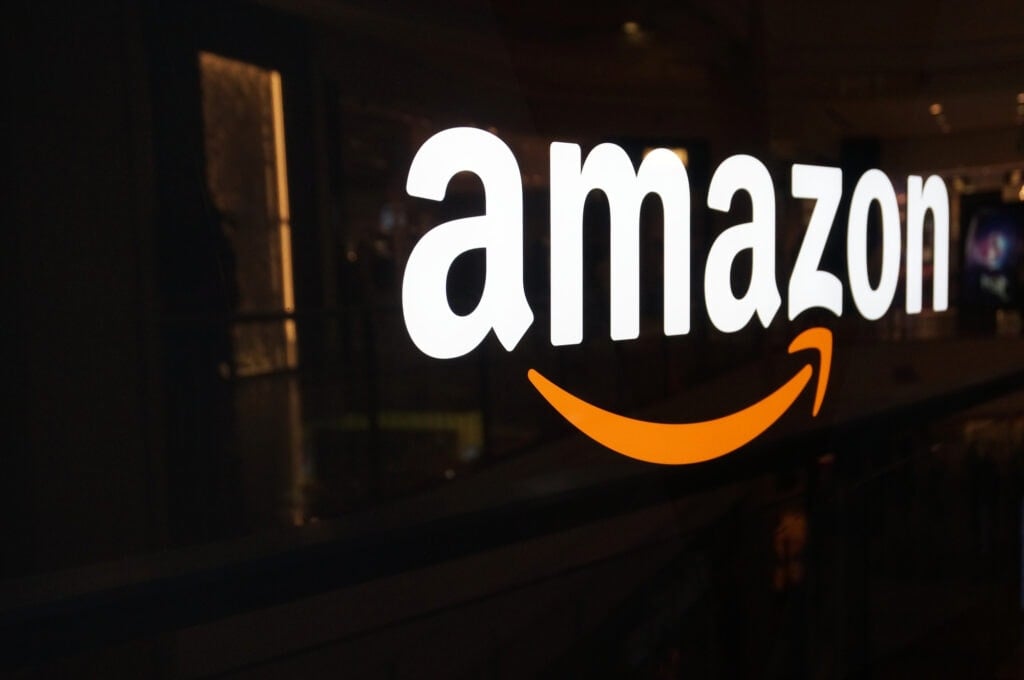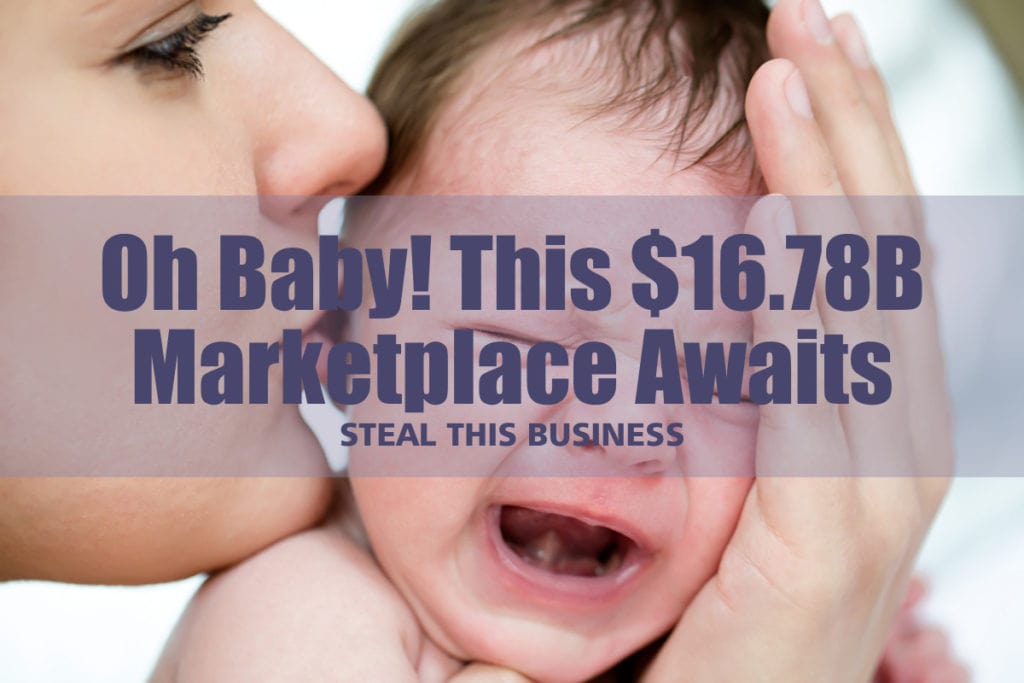Once upon a time—only one year ago—retired, bored Boomers were the primary audience buying RVs and RV accessories. The older generation sought adventure and hoped to cross a few items off their bucket list. Driving cross-country in an Airstream became the scenic dream for many retirees hoping to stay active in their golden years.
But then, COVID hit.
The global pandemic quickly reshaped how people lived, worked, and traveled. Country-wide closures left many workers unemployed. Worried about going into debt to pay their mortgage, many people purchased RVs to downsize. Those who didn't get a pink slip found themselves working from home, and many bought a camper to capitalize on this opportunity. Even the fear of catching the virus aboard a commercial flight increased the demand for motorhomes. (But road trips are way more fun anyway.)
But COVID isn't the only thing fueling record-breaking recreational vehicle sales. Now that the pandemic has slowed down, the housing market has gone berserk. Millennials can't afford homes and have started buying RVs like candy. Business Insider reported that 30% of Millennials say they will purchase an RV within next year, while only 8% of Boomers said the same.
The frenzy around COVID and housing prices sent RV sales on a soaring upward trajectory. According to Business Wire, the North America Recreational Vehicle Market grew to $26.7 billion in 2020. And it doesn't show any sign of slowing down. Forecasters estimate the market will continue growing at a CAGR of 5% and reach $35.7 billion by 2026.
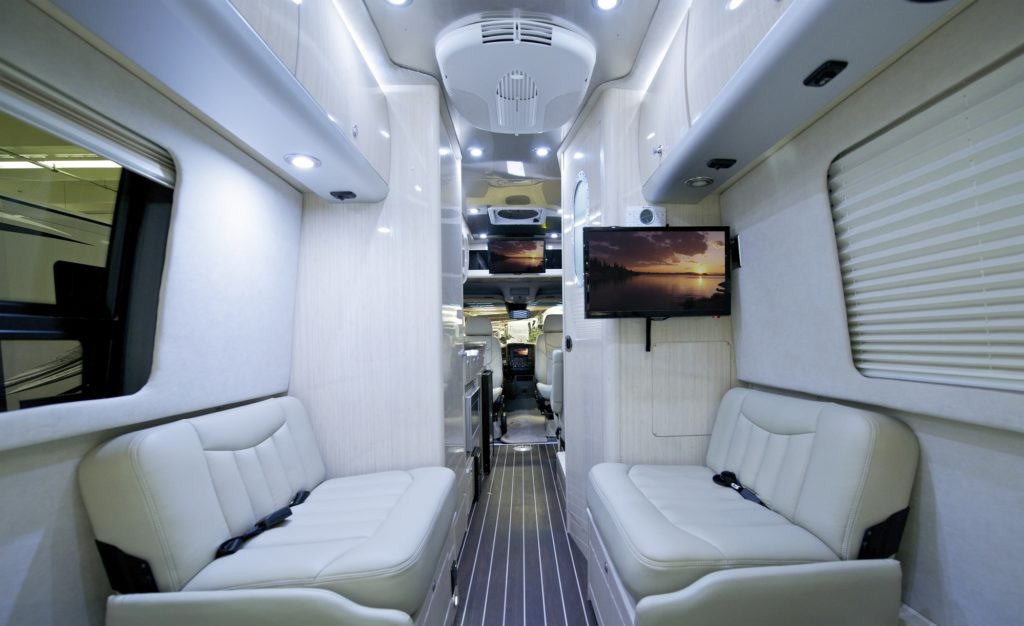
With so many people ready to hit the open road, it's prime time for a travel-loving entrepreneur to introduce cool new RV accessories and equipment to the market. So let's examine how you can make a fortune in this booming industry.
RV Accessories to Pimp Out Your Ride
Salespeople have a knack for pointing out all the fantastic features while overlooking the shortcomings. Unfortunately, many RV drivers discover this firsthand after they leave the dealership. Recreational vehicles simply don't come equipped with all the accessories needed.
There is a huge demand for aftermarket RV parts. And if you want to get into the business, this may be the perfect opportunity for you. What should you sell? An accessory that's better than anything else out there and offers value to the buyer. These practical accessories may help get your creative juices flowing:
- Surge protector (ARV: $37-$133)
- Spare fuses (ARV: $4-$17)
- Step braces (ARV: $12-$39)
- Roof vent covers (ARV: $24-$150)
- Stabilization rods (ARV: $60-$280)
- Under-the-bed lighting (ARV: $23-$32)
- Counter extensions (ARV: $18-$32)
- Bumper mount (ARV: $49-$199)
- Water filters (ARV: $19-$57)
- Water pressure regulator (ARV: $5-$100)
- Windshield wipers (ARV: $26-$51)
And that list merely covers the basics. Those who plan on traveling for more than a weekend probably want to deck out their RV with high-end, luxury accessories. Some of the most extravagant purchases may include:
- Wireless backup camera (ARV: $39-$500+)
- Solar panels and battery management systems (ARV: $600-$2,000+)
- Custom RV mattress (ARV: $199-$1,700+)
- Motorized awning (ARV: $800-$3,500+)
- Outdoor entertainment system (ARV: $1,400-$3,000+)
- Smart controls (ARV: $400-$600+)
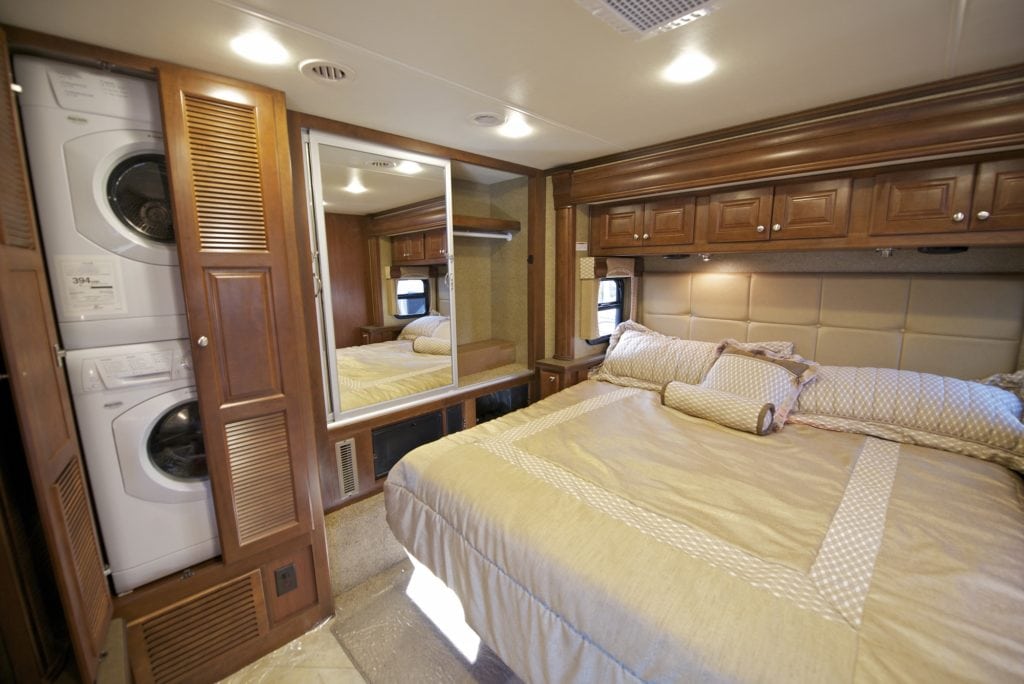
The goal of aftermarket RV equipment is to make the vehicle more functional. These accessories turn a camper into a comfy home without taking up too much valuable space. And owners will pay a premium to pimp out their RVs.
Perhaps you have an idea for a never-before-seen RV part. Or maybe you want to improve a popular accessory. Either way, it's possible to build a 7-figure business quickly.
Innovations in the RV World
Still racking your brain to come up with mind-blowing RV accessories? Here are a couple of brands that launched innovative products for recreational vehicle lovers:
Lippert
In 2017, Lippert launched its OneControl ConnectAnywhere device. This release was a sequel to the vastly popular OneControl smart RV system. The OneControl was the first device to let RV owners control all their smart appliances from a mobile app, including television, radio, thermostat, and lights.
The original OneControl relied on a stable WiFi connection to operate. However, ConnectAnywhere only needs a cellular or satellite connection to control all RV smart devices. But do motorhome owners really want this technology? Yes! And it made Jason Lippert, the company's CEO, very rich. Jason has a net worth of $51.8 million.
Origen
Family-owned and operated Origen RV Accessories made it big after launching SnapPads. The founders saw a need for a permanent jack pad to improve modern RV leveling systems. So for five years, Gordon Wilson and his sons worked alongside developers and engineers to create several SnapPads prototypes.
Like many startups, Origen didn't have a lot of capital. Gordon relied on friends and family to raise $50,000. The brand launched SnapPads in September 2015 and made its first sale the following day. In its first year of operation, the company grossed $130,000 with just one product. Today, Origen has over 40 SKUs and has grown an average of 124% year-over-year.

Which RV-Lovers Will You Serve?
You may have ideas for new RV parts floating in your head, but you need to pinpoint your target audience before jumping into the development phase. Who do you want to serve?
There are three primary RV owners:
- Campers who only need an RV to enjoy weekend getaways. They don't plan on spending weeks or months inside a trailer. Instead, they only need comfort and safety for short outdoor adventures.
- Vacationers who only need a motorhome to go on road trips a few weeks out of the year. They tend to visit the hottest tourist destinations and spend a lot of time sightseeing. At night, they stop at the local RV park. These RV owners want something easy to drive and cozy for extended vacations.
- Nomads who buy a trailer or motorhome to transform into their new home. They want a souped-up RV with all the bells and whistles and will drop a pretty penny for the latest innovations and accessories.
Marketing to RV Enthusiasts
Once you pinpoint your target audience, it's time to reach them. And no, you don't need to stop at every RV park across the country (although that sounds like an adventurous business trip). Most motorhome enthusiasts congregate online at the same sites between drives—and it's time for you to join them.
There are countless online communities and forums devoted to recreational vehicle living. Some to check out are RVNetwork, RV Life, and Do It Yourself RV. While it's most likely against the rules to join just to promote your business, you may be able to purchase ad space on these sites.
YouTube is another popular platform in the RV community. Try connecting with micro-influencers to help build your audience. Offer influencers a free product in exchange for a review or shoutout. One popular channel to consider is Happily Ever Hanks (23.2K subscribers). They regularly upload videos discussing the ups and downs of full-time RV living.
Of course, buying ads is always an effective way to promote a business. But you want to make sure that your ads reach your target audience. Many entrepreneurs choose Facebook Ads for this very reason. Unlike other services, Facebook provides helpful feedback about advertisement performance. You'll be able to see which ads make potential customers click and which ones they ignore.
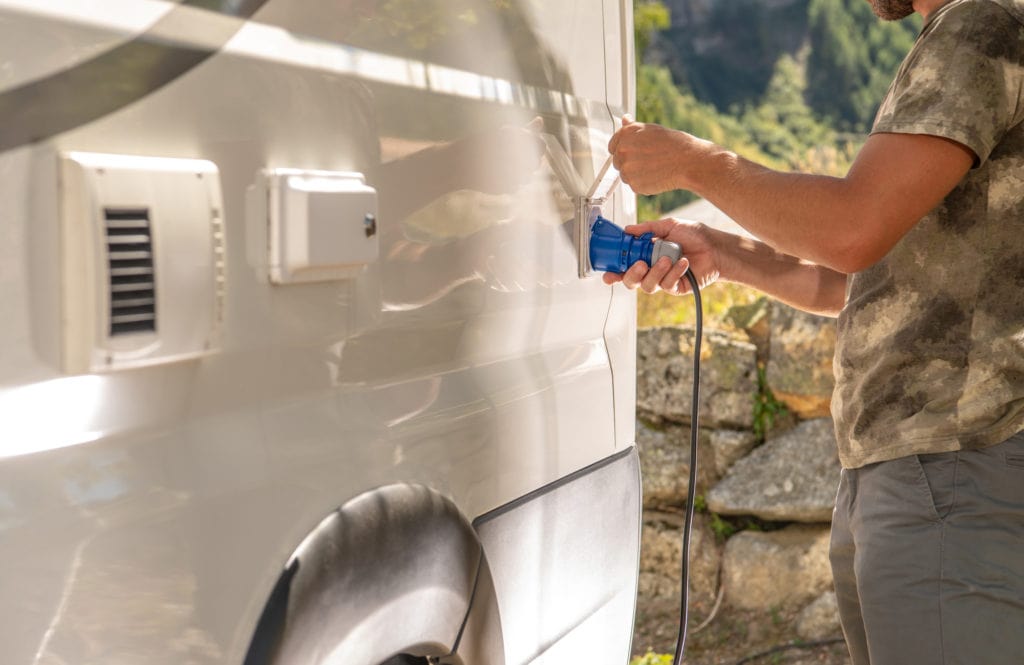
Marketing is a funny thing. What works for one brand may not work for you. That's why having multiple marketing outlets is critical. Start with what fits into your budget, and as your brand grows, start testing the waters of other advertising platforms.
Watch Out for These Hidden Potholes in the Road
Even if you launch an innovative, never-before-seen RV accessory, you'll probably hit a few bumps along the way. Don't let an unexpected flat tire put the brakes on your recreational vehicle brand. Successful companies know how to plan for the best and expect the worst. Here are three potholes you may encounter:
#1: Inventory and Fulfillment Issues
Supply and logistics issues can arise at any time. As the business owner, you'll probably spend your hours worrying about promoting and selling. However, you should also stay in the loop with your manufacturer to ensure you always have enough inventory available. Failure to do so may slow down order fulfillment and leave a bad taste in your customers' mouths.
How can you prevent this? First, monitor your company's growth and verify that your manufacturer can keep up with the demand. Then, as sales increase, consider partnering with a secondary manufacturer or logistics company to help boost production.
#2: Cash Flow Woes
Nearly every startup faces cash flow problems at some point. In the beginning, you'll probably spend most of your capital on purchasing inventory and paying manufacturers. As your business scales, you may need to rent a warehouse or hire employees. How will you pay for it all?
We teach the Owner's Model, in which one of the three core responsibilities of the owner is to make sure your business always has the money it needs. Think twice before being hesitant to share equity with investors. By building a bigger pie, there is plenty for everyone involved. Worrying about inventory running out and all the other financial concerns brand owners typically face will suck the joy (and growth) right out of your business.
#3: Falling Behind the Times
RV life is nothing new, but its popularity is. While tons of brands already offer parts and accessories, most of them still cater to Boomers. These companies won't grab the interest of Millennial RV owners. If you want to surpass them, create a brand with a modern and flexible image. And you should start with the website.
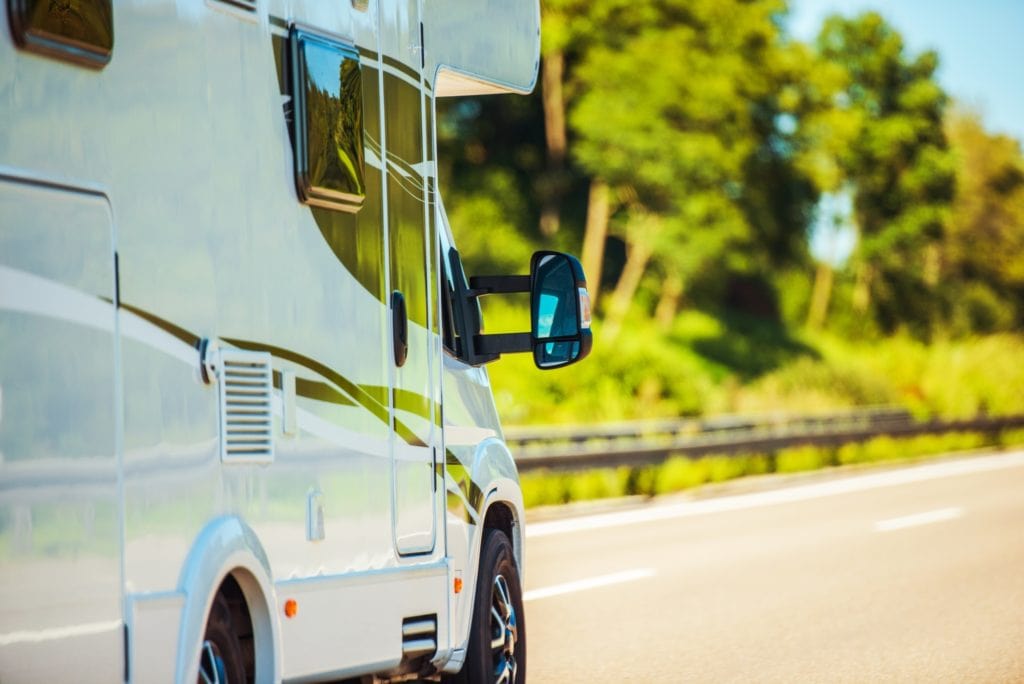
Your website is often the first thing potential customers notice. It should feature bold colors, eye-catching graphics, and interactive elements that clearly define your brand's image. Implementing AI, like chatbots, will also help you connect with a broader audience. Before going live, test every page to ensure they load quickly and without any errors.
The Takeaway
RVs reached new heights in popularity during 2020. These vehicles became a fun, affordable way to work at home while traveling across the country. As the housing market and inflation continue to spiral out of control, the RV craze is most likely here to stay.
There's one thing all RV owners love: aftermarket accessories. While there are plenty of parts already marketed towards motorhome owners, many of them miss the mark. A lot of the accessories out there are old and outdated. People now want the latest technology, and as more Millennials buy RVs instead of homes, the demand for innovative products will only increase.
Do you enjoy outdoor adventures, spur-of-the-moment road trips, or nomadic living? Then, the RV equipment niche may be the right niche for you. And if you can launch the latest, must-have accessories for motorhome owners everywhere, scaling a 7-figure business in the $26.7 billion recreational vehicle market will be a breeze.
If you'd like some help getting started, the Capitalism Incubator is exactly the place to get it. This is where we walk ambitious entrepreneurs all the way from square one to where they can build a million-dollar business they can someday sell for an 8-figure payday. We have all the ideas, connections, and funding you need to make it happen. Find out more and apply here.
